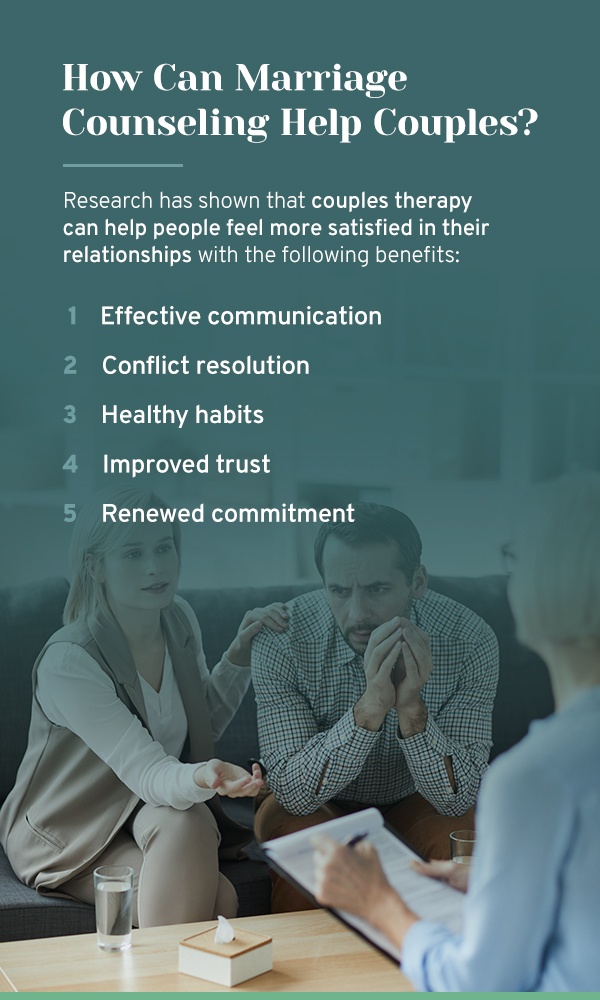The smart Trick of Aim Point Counseling That Nobody is Talking About
The smart Trick of Aim Point Counseling That Nobody is Talking About
Blog Article
The Best Strategy To Use For Aim Point Counseling
Table of ContentsAim Point Counseling Things To Know Before You BuyThe Ultimate Guide To Aim Point CounselingHow Aim Point Counseling can Save You Time, Stress, and Money.What Does Aim Point Counseling Do?Not known Factual Statements About Aim Point Counseling See This Report about Aim Point Counseling
The longitudinal style entails a pre-treatment study and two follow-up studies at 3- and 12-months post-intervention. The study is embeded in 8 Relationships Australia Victoria centres, across city, outer residential areas, and regional/rural sites. Relationships Australia, a non-government organisation, is the biggest service provider of couple counselling and partnership solutions in Australia.
These high rates of partnership breakdown have actually been continually linked with unfavorable wellness effects for both adults and children following divorce/separation.
Examine This Report on Aim Point Counseling
The results of divorce and separation can be damaging, research study suggests that high relationship disharmony in intact couples is additionally likely to have negative end results.
Research to day has recognized both couple and individual factors that may contribute to partnership dissonance. These include partnership fulfillment and commitment at the pair level, and clinical depression at the individual level.
The Of Aim Point Counseling
While many research studies indicate renovations in partnership contentment complying with pair counselling, they are restricted by the samples and procedures used, mainly short-term follow-up time frameworks, and evaluations that do not account for the dyadic nature of couple data - couples counseling. Connection dedication, based on procedures such as the Dedication Supply (CI) [19], is an additional generally examined partnership outcome.
To summarise, research study suggests that couple-specific variables in addition to private aspects may anticipate the outcomes of couple counselling and relationship services. The causal instructions of these relationships, nevertheless, is much less clear. These observations are very important, given that, to warrant and lead the application of partnership solutions such as pair therapy, empirical evidence must explore both the end results of connection services and the factors that anticipate successful therapy.
As a result, there is a growing agreement that efficiency research studies must be matched by performance research study to best inform clinical technique [ 29] The limited effectiveness research that exists to date recommends that pair coaching can enhance end results such as connection contentment [33,43], communication abilities and general wellness [44], at least in some European countries.

We currently know little regarding the accounts of couples who seek connection education compared with those who seek partnership therapy, or click for source the end results of these programs. Unscientific evidence suggests that there may be substantial distress among at the very least some couples seeking relationship education. Partnership education programs differ from couple coaching as they are usually very structured, carried out in groups, and focus on a combination of 4 parts; awareness, comments, cognitive modification, and abilities training [45]
The Aim Point Counseling Statements
Comments entails individuals finishing questionnaires regarding their partnership (e.g. procedures of interpersonal troubles), and obtaining info on what their scores indicate. Cognitive-behavioural approaches promote changing cognitions to promote favorable connections. These might consist of promoting sensible attributions/expectations around adverse companion behavior [46] Finally, in abilities training, pairs go to talks or discussions on partnership abilities, and practise these throughout facilitator-led activities [ 45]
These meta-analyses highlight restrictions in the present literature on partnership education. This example profile may not represent clients that normally present for partnership education and learning.
The Definitive Guide to Aim Point Counseling

Very little study has actually examined the comparative benefits of pair coaching and partnership education and learning programs. As clients are likely to self-select right into these service types, it is not clear whether characteristic partnership distress accounts existing to each solution type, or without a doubt whether there is a communication in between offering profile, solution type and outcome.
(https://www.intensedebate.com/people/a1mpoint)
Thus, we have included a 12-month follow-up to gauge longer-term patterns and results.
We suggest to use multi-level analytical modelling procedures that regulate for the inter-dependence of pair information to evaluate any therapy effects. The particular purposes of the ECC research study are to: 1. Map profiles of clients seeking neighborhood agency-based pair coaching vs. partnership enhancement programs in terms of socio-demographic and connection indications (such as connection fulfillment, relationship commitment, social problems, and factors for attending), in addition to health (such as clinical depression, basic well-being) and health service use (eg.
2. Determine whether couple coaching and connection education solutions improve three- and twelve-month end results for partnership complete satisfaction, dedication, and anxiety, utilizing analytical evaluations appropriate to couple information. 3. Determine the loved one payments of customer aspects (private and couple) and therapy/education aspects to end results at 3- and 12-months, and to sustainability of results with time.
The smart Trick of Aim Point Counseling That Nobody is Talking About
Multi-level modelling to figure out pre-post differences, controlling for dyadic (pair) level. To add to the literature assessing the efficiency of community-based pair coaching. The results will aid clinical decision-making in community-based relationship solution setups, and professional training. 3. To identify the loved one contributions of client/couple and treatment variables to outcomes at 3- and 12-months, and to sustainability of results with time.
Report this page